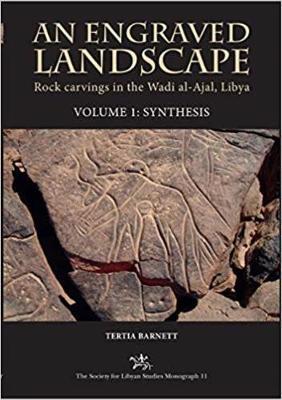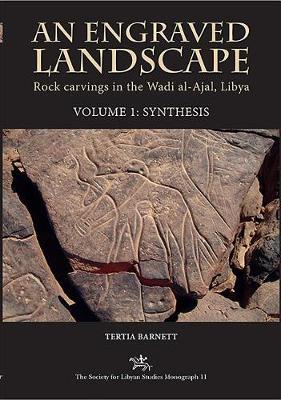Society for Libyan Studies Monograph
2 primary works
Book 11
An Engraved Landscape is a contextual analysis of a substantial new corpus of engravings from the Wadi al-Ajal, situated in the Central Saharan region of south west Libya. The wadi is renowned as the heartland of the Garamantian civilization, which emerged from local mobile Pastoral communities in the 1st millennium BC, and dominated trans-Saharan trade and politics for over a thousand years. Extensive archaeological and palaeoenvironmental investigations in recent years have provided detailed insight into the later prehistory and protohistory of the wadi and surrounding areas. However, prior to the fieldwork detailed in this volume, only a handful of carvings had been recorded in the wadi. This volume is based on systematic survey, conducted between 2004 and 2009, which recorded around 2,500 previously unknown or unpublished engraved and inscribed rock surfaces. All forms of engraving, whether figurative or surface markings, were viewed as significant residues of human interaction with the rock surface and were recorded. The resulting database provides an opportunity to analyse the engravings in relation to their changing physical and cultural contexts, and the discussion offers a fresh interpretation of Saharan rock art based on this substantial new evidence. An Engraved Landscape also captures in detail a unique heritage resource that is currently inaccessible and threatened. This record of the fragile engravings provides an important source of information for researchers and students. The Gazetteer is presented in Volume 2.
Book 11
The Sahara contains one of the most extensive and enigmatic collections of rock art in the world. An Engraved Landscape represents the main report on the rock art of the Wadi al-Ajal, south west Libya. Based on extensive fieldwork directed by the author between 2004 and 2009, and funded by the British Academy and Society for Libyan Studies, this monograph presents and synthesises a rich corpus of new engravings from an area of central importance in the cultural development of the Sahara. Spatial and quantitative analyses of the carvings reveal changing relationships between humans and the landscape over an 8000-year period from c.6000 BC to recent times. The volume is beautifully illustrated, with a substantial selection of the engraved panels presented in photographs and line drawings.

